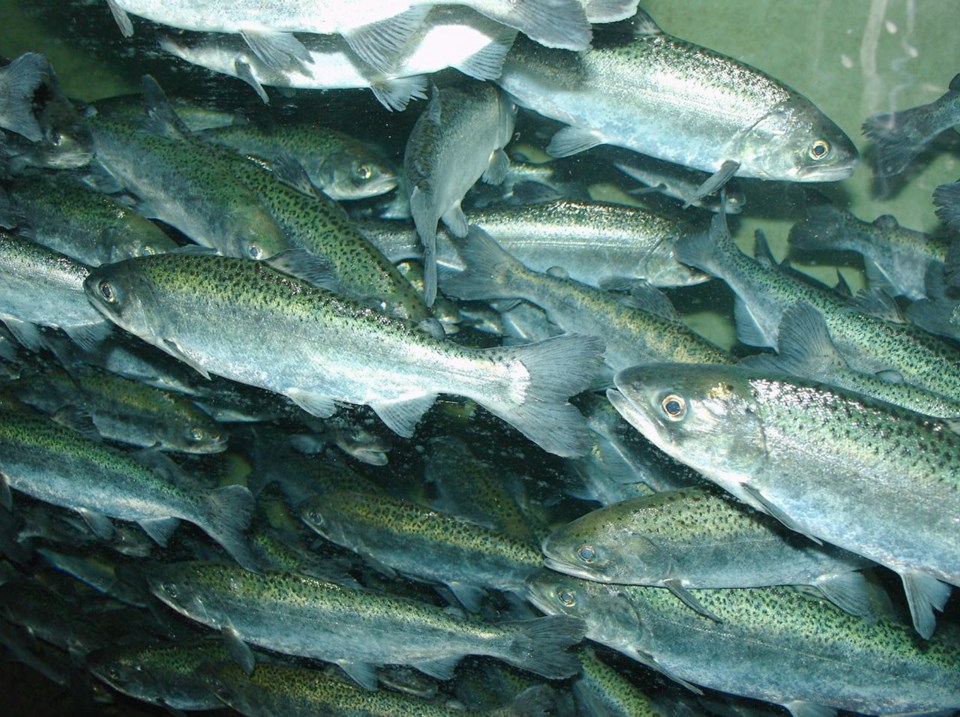Re: “Substantial chinook restrictions likely needed,” March 15.
Facts matter. In the politically intense West Coast fishing arena, it’s even more important to be sure that information that goes to the public is at least provable, given that fisheries science and management are imprecise disciplines.
Some of former fisheries minister David Anderson’s remarks in the article don’t meet that standard. The subheading, “Closures key to saving stocks,” is premised on his assertion that his zero-mortality policy to conserve struggling interior Fraser River coho stocks worked. Anderson is quoted as saying that the coho experience showed that stock recovery can be quite swift.
“We did very well, very quickly,” he said.
There is no evidence that these remarks are correct. There were some periods of improvements, possibly associated with variable ocean-survival rates, but proof of success or failure is in the final results. Definitive measures of proof are the stock’s ability to maintain its population, and to provide for marine and in-river fisheries at sustainable harvest rate levels.
Two decades have passed, and no directed marine fisheries on these stocks have been allowed. Furthermore, exploitation rates were held at less than five per cent to allow for incidental encounters, with a one-year increase to 10 per cent to prosecute commercial fisheries for sockeye. At best, his policy halted or slowed further declines. If that’s success, I’d hate to see what failure looks like.
Another remark is disturbing: “It’s unfortunate that this is the only real tool we have.”
This was an overused Department of Fisheries and Oceans statement that justified severe management measures. Before the Canada U.S. Salmon Treaty was ratified, fishery exploitation rates were too high due to a fish war with the Americans. After treaty implementation, fishery cuts and conservation-based management were givens. However, that didn’t preclude conflict with Fisheries and Oceans.
Fishermen expected DFO to keep its part of the bargain by using all available tools to restore stocks and revive fisheries. They were often disappointed. With Fraser coho at five per cent fishing-mortality rates, it’s hard to blame fishing pressure for two decades of rebuilding failure.
It seems the Fraser coho example was proffered to promote similar management actions for up-river Fraser chinook. Unfortunately, it’s the worst case possible. For example, Strait of Georgia chinook stocks were an embarrassment to Canada during the first decade of salmon-treaty negotiations. Today, these chinooks are performing comparatively well, particularly on the famed Cowichan River.
This turnaround was not solely because of fishery cutbacks. It was achieved through volunteer work, private/public financial commitments, restoration, hatchery technology and effective fisheries closures that didn’t cripple the region’s fisheries. At the lowest point, fewer than 1,000 chinook returned to the Cowichan. Recent escapements have exceeded 25,000 fish.
Anglers support a balanced recovery approach because it works. They back up talk with hundreds of thousands of dollars and untold volunteer hours working on enhancement projects. So what have the two senior governments been doing on the upper Fraser River?
Have the full powers of the Fisheries Act been used? Have important habitats and water-flow rates been protected? Have measures to mitigate population growth and industrial activity been implemented? I don’t know, but I do know that Ottawa has had a weak stomach for funding the West Coast’s resource needs.
Beginning in 1994, the government began to progressively close hatcheries on the Fraser River. These facilities enhanced major chinook stocks while acting as a satellite location for scores of other tributary streams. We are told these stocks are critically important for southern resident killer whale survival. Have these budget-driven actions, which started a few years ahead of the whales’ latest period of decline, contributed to this problem?
Federal Fisheries Minister Jonathan Wilkinson and Premier John Horgan just announced $145 million in funding for salmon recovery over five years. This is good. However, two questions pop up immediately. How will it be spent, and what happens when it runs out?
To add perspective, Washington state is embarking on a $1.1-billion US program for killer whale and salmon recovery. At a recent Victoria luncheon, the minister noted Washington’s $1.1 billion is not fully secured, while Canada’s $145 million is. However, the magnitude of just one state’s intended commitment is telling by comparison.
Repeating the same thing and expecting a different result is a truism. By this measure, promoting an outdated salmon-recovery model is a mistake. Success depends on implementing broad recovery plans, getting buy-in from affected parties and securing long-term commitments from Ottawa.
Tom Davis of Colwood, who retired after 40 years in the sport fishing business, served 15 years on the federal Sport Fishing Advisory Board and 10 years on the Canada/U.S. Pacific Salmon Commission. For 20 years, he volunteered with salmon enhancement on the Saanich Peninsula.



